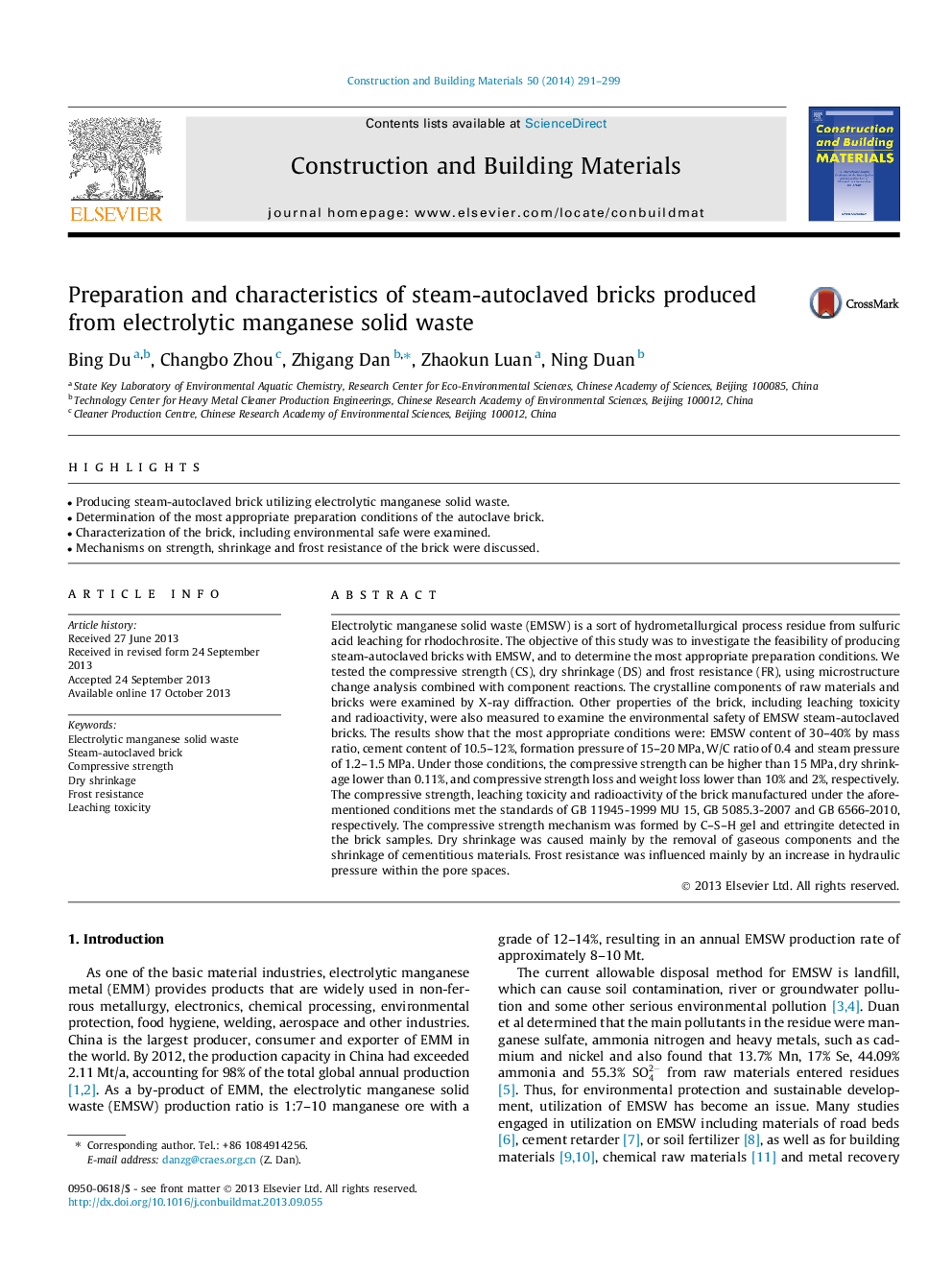| کد مقاله | کد نشریه | سال انتشار | مقاله انگلیسی | نسخه تمام متن |
|---|---|---|---|---|
| 257886 | 503602 | 2014 | 9 صفحه PDF | دانلود رایگان |
• Producing steam-autoclaved brick utilizing electrolytic manganese solid waste.
• Determination of the most appropriate preparation conditions of the autoclave brick.
• Characterization of the brick, including environmental safe were examined.
• Mechanisms on strength, shrinkage and frost resistance of the brick were discussed.
Electrolytic manganese solid waste (EMSW) is a sort of hydrometallurgical process residue from sulfuric acid leaching for rhodochrosite. The objective of this study was to investigate the feasibility of producing steam-autoclaved bricks with EMSW, and to determine the most appropriate preparation conditions. We tested the compressive strength (CS), dry shrinkage (DS) and frost resistance (FR), using microstructure change analysis combined with component reactions. The crystalline components of raw materials and bricks were examined by X-ray diffraction. Other properties of the brick, including leaching toxicity and radioactivity, were also measured to examine the environmental safety of EMSW steam-autoclaved bricks. The results show that the most appropriate conditions were: EMSW content of 30–40% by mass ratio, cement content of 10.5–12%, formation pressure of 15–20 MPa, W/C ratio of 0.4 and steam pressure of 1.2–1.5 MPa. Under those conditions, the compressive strength can be higher than 15 MPa, dry shrinkage lower than 0.11%, and compressive strength loss and weight loss lower than 10% and 2%, respectively. The compressive strength, leaching toxicity and radioactivity of the brick manufactured under the aforementioned conditions met the standards of GB 11945-1999 MU 15, GB 5085.3-2007 and GB 6566-2010, respectively. The compressive strength mechanism was formed by C–S–H gel and ettringite detected in the brick samples. Dry shrinkage was caused mainly by the removal of gaseous components and the shrinkage of cementitious materials. Frost resistance was influenced mainly by an increase in hydraulic pressure within the pore spaces.
Journal: Construction and Building Materials - Volume 50, 15 January 2014, Pages 291–299
